IN FOCUS: Johor’s abuzz over a proposed T-shaped integrated transport network that could boost its SEZ with Singapore
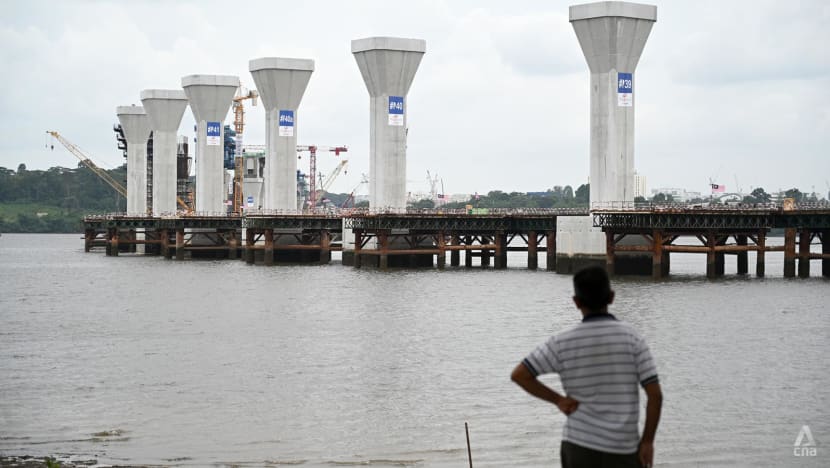

This audio is generated by an AI tool.
-
With the Johor-Singapore Special Economic Zone on the horizon, the Malaysian state wants to be a key regional investment destination, tapping into synergies with neighbouring Singapore, similar to how China’s Shenzhen leveraged the economic progress of its neighbour Hong Kong
- It must first address the issue of worsening congestion and improve connectivity in and around the southern corridor, say experts
- The state government, backed by Malaysia’s king, has a master plan to link up the Johor Bahru-Singapore Rapid Transit System (RTS) Link with a proposed Light Rail Transit (LRT) system and a possibly revived High-Speed Rail (HSR) project to improve connections across the country
- However some are questioning the concept’s financial viability given the exorbitant costs and the federal government’s other pressing priorities
JOHOR BAHRU: Diploma student Malani Jairaman felt desperate as she stood in line for 40 minutes at a stifling bus station in central Johor Bahru.
The 22-year-old who lives in the suburban town of Skudai can only afford RM5 (US$1.05) a day for transportation. The public bus service called myBas - operated by local operator Syarikat Handal Indah - is the only way she can travel to and from school.
However, over the last two years, she noticed that bus services have worsened. A 19km one-way trip which used to take an hour now takes close to two.
The buses are scheduled to move off from Johor Bahru Sentral at frequencies of 40 to 45 minutes but there are delays. Buses are also frequently stuck in traffic during peak hours.
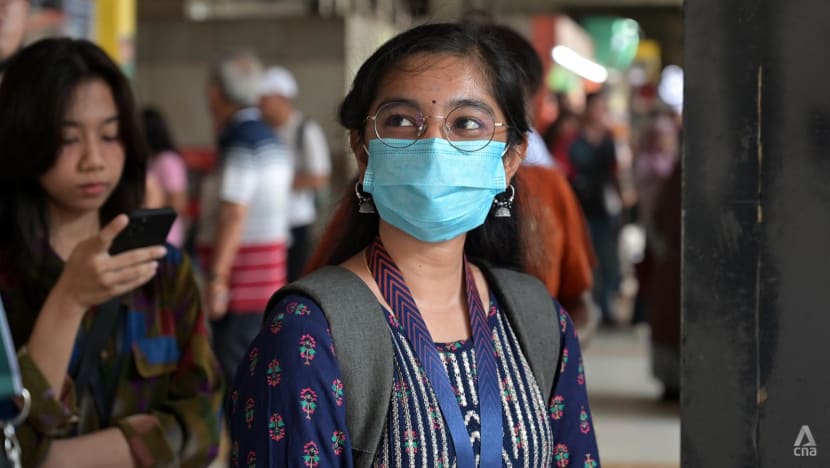
“We have no other choice. If there were alternatives like the LRT system in Kuala Lumpur, we would take it,” said Ms Malani, referring to the light rail transit network that connects Malaysia’s capital and its surrounding area.
Southern Johor’s transport woes are more than an everyday inconvenience for local residents.
As plans for a proposed Johor-Singapore Special Economic Zone (SEZ) gather pace, connectivity and ease of travel around Southern Johor, the rest of the country, and to Singapore, could determine if the state achieves its economic potential.A memorandum of understanding (MOU) on the SEZ was signed between Singapore’s Trade and Industry Minister Gan Kim Yong and Malaysia’s Minister of Economy Mohd Rafizi Ramli on Jan 11, with a full-fledged agreement expected to be signed by the end of the year.
On Feb 28, the Johor state development committee met with Mr Anwar in Putrajaya. The prime minister agreed to RM4.7 billion worth of projects for Johor, including those that will improve connectivity with the SEZ.
These projects include wider accessibility and transport aims such as upgrading immigration checkpoints and highway development.
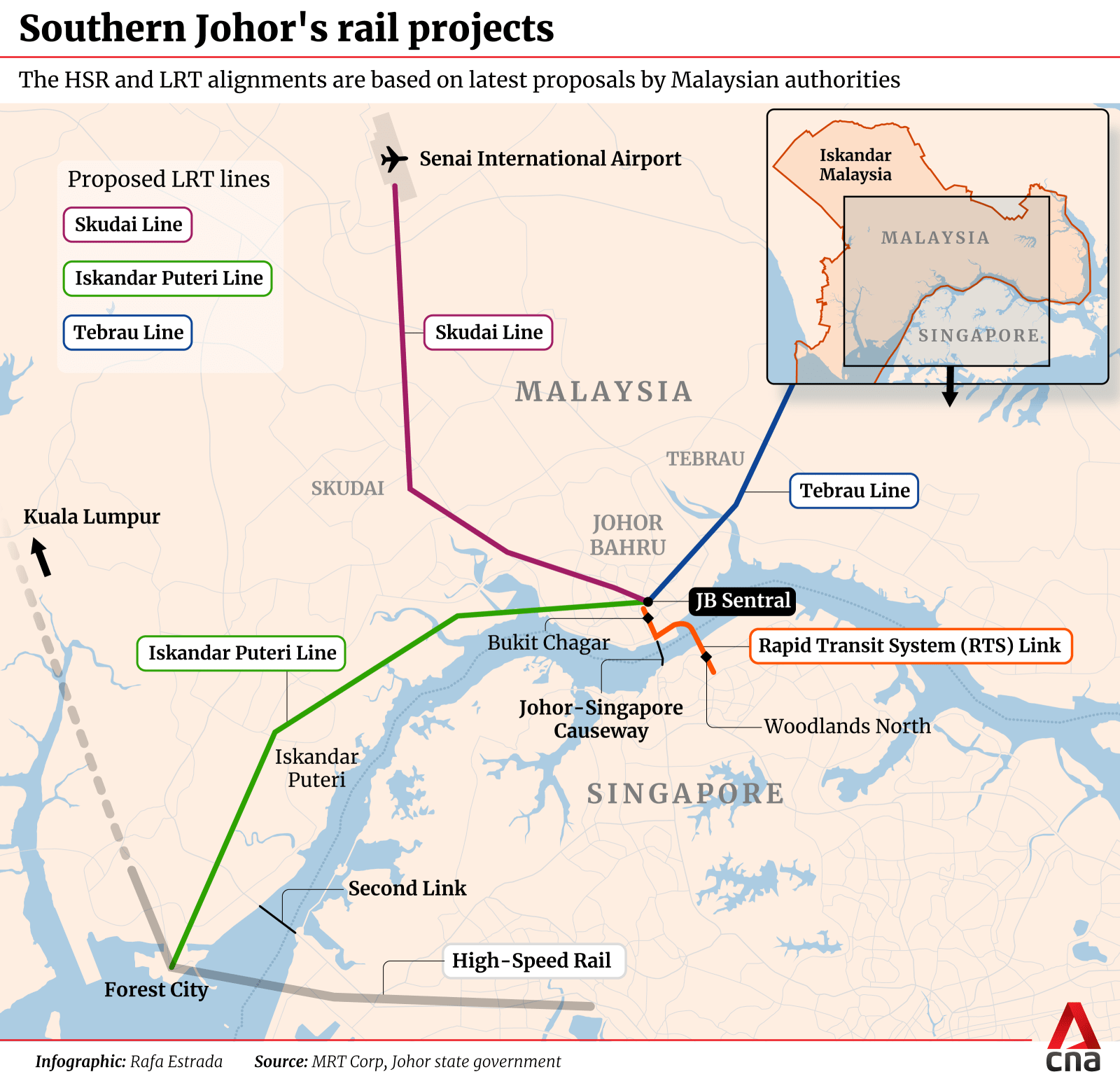
Central to the SEZ’s success is the state government’s plan to integrate the Johor Bahru-Singapore Rapid Transit System (RTS) Link, which is slated to begin operations by late 2026, with the state’s own LRT system and the Kuala Lumpur-Singapore High-Speed Rail (HSR) project which is being mooted for revival.
While the RTS Link is on track, both the LRT and HSR are still in the proposal stages. The HSR revival is also backed by Malaysia’s king, Sultan Ibrahim Iskandar from Johor.
Many stakeholders, including travellers and businesses, are looking forward to how a better transportation system will not only open up transport links beyond Johor but also boost investments to the state, which in turn will have a positive effect on Malaysia’s overall economy.
However, analysts warned that Malaysia’s federal government, who is the key decision body on whether these projects go ahead, must consider the financial viability and whether it should prioritise Johor given other pressing traffic issues in different parts of the country.
In an interview with CNA, Johor’s Works, Transportation and Infrastructure committee chairman Mohamad Fazli Mohamad Salleh said that potentially having these three rail networks interlinking key cities in southern Johor “in the short term” will boost its chances of fulfilling its potential as a key investment destination for Malaysia as a whole.
“At present, the HSR is under consideration by the federal government for revival, as for the implementation of the LRT … this is under the consideration of the Johor state government before proposing to the Cabinet,” said Mr Mohamad Fazli.
“God willing, we will have feeder buses to connect these three modes of transportation,” he added.

He explained that the three networks will form a T-shaped system passing through the southern Johor corridor.
Mr Fazli added that the LRT would stretch across 30km and transport passengers from Johor Bahru city centre to the suburbs via three lines - the Iskandar Puteri, Skudai and Tebrau lines. The estimated cost of the proposed project is RM20 billion.
Meanwhile the 350 km-long HSR project, which would cut travel time between Kuala Lumpur and Singapore to 90 minutes, was first proposed in 2013 and aimed to be operational by 2026.
But it was discontinued after multiple postponements at Malaysia's request and the agreement lapsed in December 2020. Malaysia paid more than S$102 million (US$76.46 million) in compensation to Singapore for the terminated project.
Talk of the project’s resurrection has gained strength after Malaysia Prime Minister Anwar Ibrahim took power following the general elections in 2022 and visited Singapore early last year.
On Aug 3 last year, then-Acting Transport Minister Chee Hong Tat said in parliament that Singapore was willing to discuss any new proposal from Malaysia for the KL-SG HSR project in good faith, “starting from a clean slate”.
In an interview with the Straits Times last year, Sultan Ibrahim said that he wanted to revive the HSR project, with the rail passing through Forest City at the Malaysian border.
The federal government is currently reviewing proposals from invited players from the private sector to deliver the project.
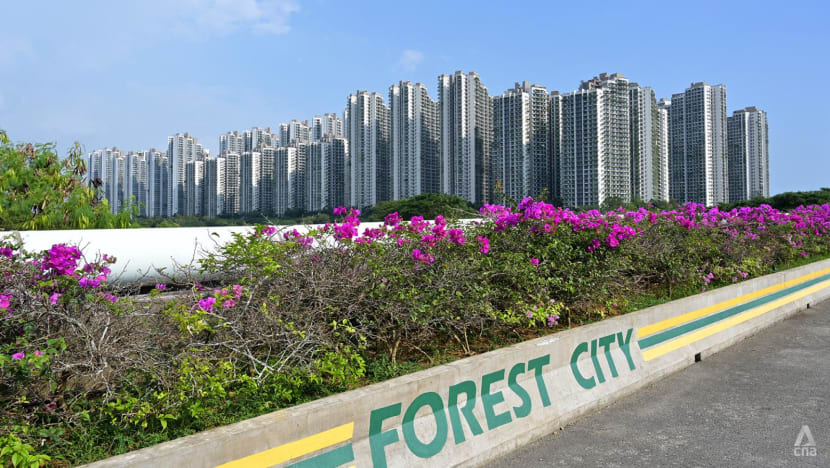
In addition to the SEZ, Prime Minister Anwar announced during a visit to Johor in August 2023, that the beleaguered Forest City development will be designated as a special financial zone (SFZ) to spur the economy in the Iskandar Malaysia region.
He outlined that the zone would offer businesses incentives to set up operations, such as a flat income tax rate of 15 per cent for skilled foreign workers compared to 30 per cent elsewhere, multiple entry visas as well as fast track entry for those who are based in Singapore.
ISKANDAR MALAYSIA NEEDS RAIL NETWORK TO BE INTERNATIONAL METROPOLIS
The vision to rejuvenate Johor into a key investment destination is not new. In 2006, the Malaysian government led by then-prime minister Abdullah Ahmad Badawi conceptualised the Iskandar Malaysia project, a potential international metropolis which spans four major districts in the southern state - Johor Bahru, Iskandar Puteri, Pasir Gudang and Kulai.
But its progress was halted due to longstanding issues on connectivity within Iskandar Malaysia and with Singapore, which has hamstrung the region’s development.
This includes traffic congestion at the Causeway as well as poor accessibility between areas across southern Johor.
However, ongoing discussions to launch the SEZ - which will include passport-free immigration clearance and digitised cargo clearance on both sides of the border - have renewed optimism that southern Johor may realise its potential.
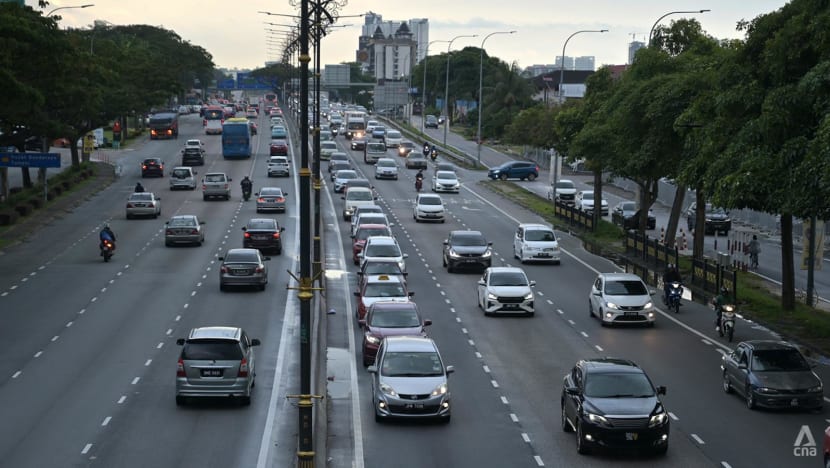
This is further boosted by the RTS Link project, which is around 65 per cent completed. The rail project connects Bukit Chagar in Johor Bahru to Woodlands North in Singapore, with a peak capacity of up to 10,000 passengers per hour per direction.
Last year, in a speech at the Johor state assembly, chief minister Onn Hafiz Ghazi said that Johor could follow in the footsteps of Shenzhen in China.
He said that Shenzhen developed its own SEZ in 1980 and within four decades transformed itself “from a poor fishing village with a population of 300,000 to a high-tech international metropolitan city with 17 million people”.
“Shenzhen’s gross domestic product (GDP) in 2021 exceeded US$400 billion and it has become China’s third largest city,” said Mr Onn Hafiz.
“What Shenzhen has achieved proves that the Johor-Singapore SEZ can yield the best results for the state,” he added.
Associate Professor Nor Aziati Abdul Hamid, senior researcher at the Universiti Tun Hussein Onn’s Centre of Excellence for Rail Industry (ICoE-Rail) told CNA that Malaysia has always been keen to follow in China’s footsteps in developing efficient railway systems at its key economic corridors.
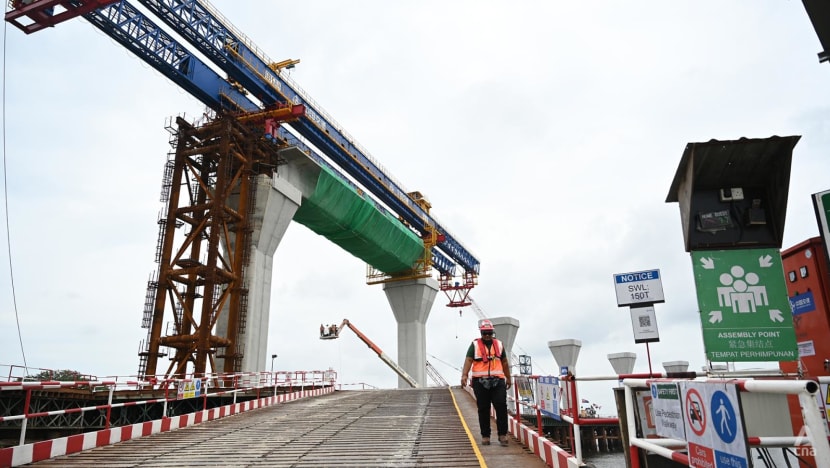
“It has always been Malaysia’s vision to invest heavily in rail because this is a safe deposit for the country, every high-tech investment zone has their own rail transport system,” said Assoc Prof Nor Aziati.
She outlined how Shenzhen, which Johor wants to emulate, has a high-speed rail system linked to Guangzhou and Hong Kong, as well as efficient tram and metro systems.
“Johor, which is an important economic corridor for the country, needs an efficient railway network,” she added.
SHOULD RESOLVING JOHOR’S TRANSPORT WOES BE PRIORITISED OVER OTHER PARTS OF MALAYSIA?
Johor’s state government exco member Mr Mohamad Fazli told CNA that there is an urgent need for the rail transport system to be implemented because of how the congestion issues at the Causeway, as well as in and around Johor Bahru town centre, have worsened.
He said that based on studies conducted by the state government as well as Iskandar Regional Development Authority (IRDA), a statutory body set up by the federal government to oversee the development of the area, the level of congestion in Johor Bahru is at the same level as that of the Klang Valley, an urban area in the state of Selangor, and around the capital city Kuala Lumpur.
“There are push and pull factors that have worsened the traffic situation. The state of Malaysia’s exchange rate (low value in comparison to the Singapore dollar) has persuaded many Johoreans to work in Singapore and they commute daily at the Causeway. On the other hand, many Singaporeans come to Johor because our prices of goods are lower,” said Mr Mohamad Fazli.
“We have communicated this to the transport minister Anthony (Loke) and the Ministry has agreed that the traffic congestion in Johor Bahru is at the same level as congestion in the Klang Valley, and they will be tackled by a special task force chaired by Deputy Prime Minister One (Ahmad Zahid Hamidi),” he added.
The inconveniences of commuting across the land checkpoints between Johor and Singapore have been well documented.
The situation improved recently following monitoring by the Johor state government as well as more immigration officers being deployed at the immigration checkpoints at the Woodlands Causeway and Second Link.
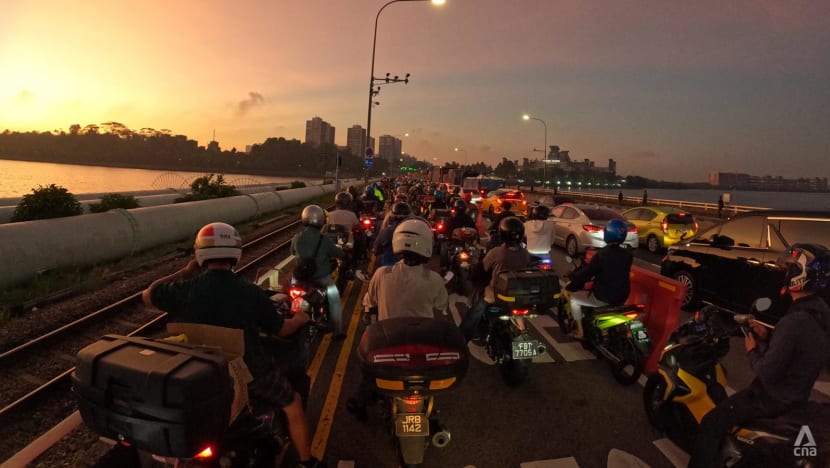
However, one-way two-hour commutes have continued to be the norm, especially during peak hour travel.
Mr Razali Tompang, a communications executive who crosses the Causeway daily by motorcycle between Larkin in Johor and his office in Singapore’s Joo Chiat, told CNA that even after 16 years, he has not gotten used to this cumbersome commute.
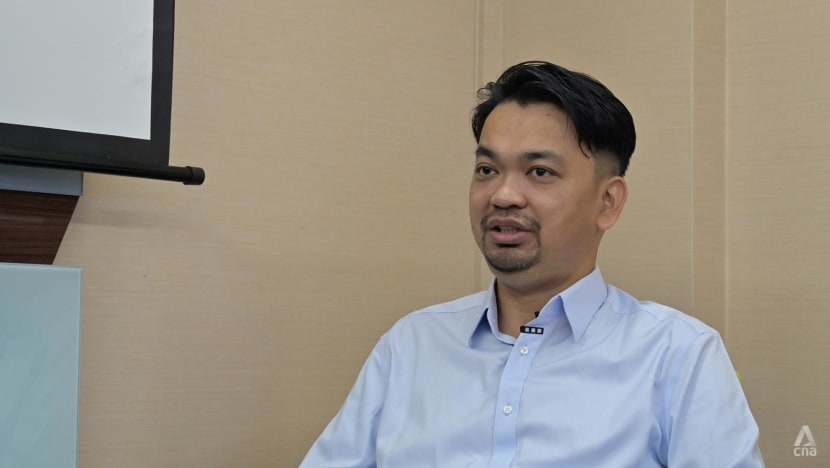
“Everyday I leave my office here in Geylang at 6pm only to clear Causeway and both immigrations at maybe 8pm,” said Mr Razali.
“So it’s very taxing for me, especially with all the fumes and smoke and dust, with the noise pollution,” he added.
The 45-year-old told CNA that he is looking forward to the RTS Link system as an alternative mode of transport.
“It will take five minutes to cross the bridge, so that could be a plus. But we have to wait and see, and consider what the price will be like, and will it be too crowded etc.,” he added.
Experts who spoke to CNA said that given the federal government’s finite resources, it has to allocate the transport budget over different parts of the country.
While the Johor state government has outlined that Johor’s needs should be prioritised because of its congestion woes and the need to resolve them with the launch of the SEZ, analysts told CNA that the federal government must also be sensitive to the needs of other states and territories.
Some experts outlined that it is important to prioritise Johor because of how big a role it already plays in Malaysia’s economy, and this is set to grow with the SEZ.
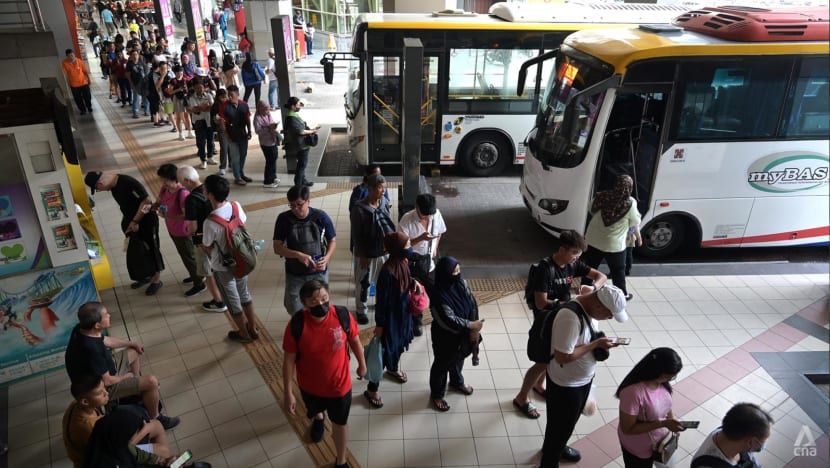
Economist Nanthakumar Loganathan from Universiti Teknologi Malaysia told CNA that based on official figures in 2023, Johor emerged as the state that contributed the most to Malaysia's trade - encompassing 30 per cent of the total amount.
"With a good transport network in the SEZ region, more investments will come into Johor and this will be good news for the Malaysian economy," said Dr Loganathan.
“Solving Johor’s congestion issues will bring multiplier benefits to the rest of the country,” he added.
However, ICoE-Rail’s Assoc Prof Nor Aziati noted that the Klang Valley, which has a larger population and more severe congestion, requires “more urgent attention”.
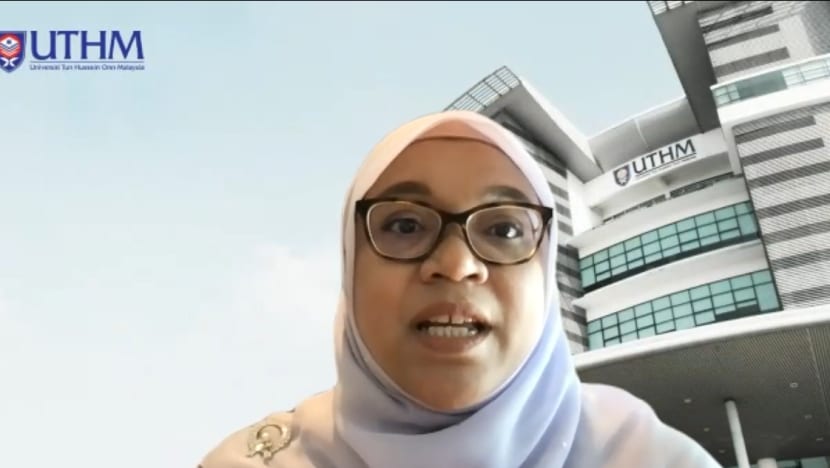
“Neglecting these areas could exacerbate existing problems and hinder their economic growth potential,” said Assoc Prof Nor Aziati.
“Focusing heavily on Johor could mean fewer resources for much-needed projects in other regions, creating a sense of inequality and potentially fuelling regional dissatisfaction,” she added.
IMPROVING CONNECTIVITY WITH SINGAPORE
Representatives of the federal government and the Johor state government told CNA that greater connectivity between Johor and Singapore would encourage more businesses to participate in the SEZ and this would have a tangible impact on the economies of both countries.
Singapore and Malaysia were each other's second-largest trade partners in 2022, with bilateral flows reaching US$83.53 billion. Singapore was also one of Malaysia's top sources of foreign direct investment, contributing 8.3 per cent of its total investments for that year.
However, the Johor state government is aware that for the SEZ to take off and for Johor to fulfil its objective in becoming a key regional investment destination, it needs to address the congestion issues around the city as well as boost connectivity with Singapore.
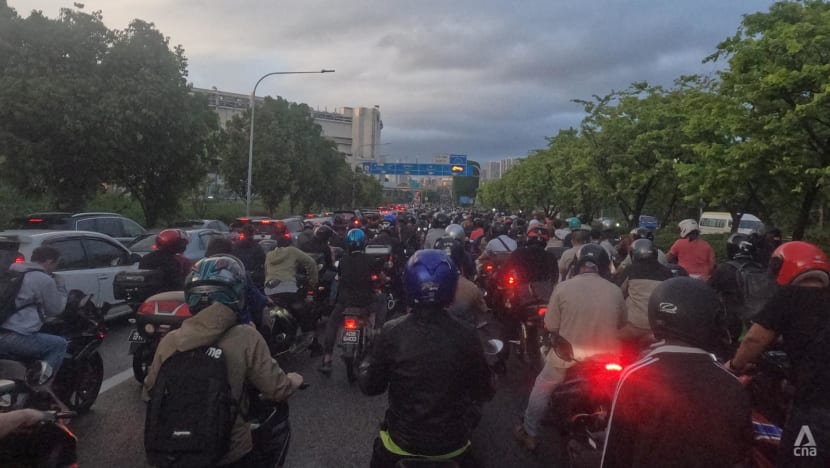
On cross-border travel, Mr Mohamad Fazli maintained that based on research done by the state government, around 18 per cent of the current commuters who travel across the Causeway daily will switch transport modes to use the RTS Link when it starts operations.
However, he stressed that this would mean that the Causeway and Second Link are likely to continue to see congestion as the overall volume of travellers is expected to increase over the next couple of years, especially with the Johor-Singapore SEZ possibly being launched.
“We are working hard to launch these projects in the short term but for them to be successful and bring investments to Johor, the people must back them and switch out from using their own private vehicles,” he added.
Mr Mohamad Fazli, who heads a multi-agency task force that looks into easing congestion at the Causeway and Second Link in Tuas, told CNA that the state government is considering measures to alleviate congestion in the short term, such as building a walkway for pedestrians who prefer to walk across the 1km bridge.
“We want to encourage people to walk because it would ease congestion in the car and motorbike lanes but we are studying how we can implement this for the safety of all travellers,” he added.
The federal government also recognises that there is a need to offer more alternatives for travellers between Johor and Singapore.
Mr Liew Chin Tong, deputy minister of investment, trade and industry, told CNA in an interview that the government was looking at the possibility of launching more ferry services, such as from Forest City to Tuas or Pasir Gudang to Changi.
The Ministry of Economy, led by Mr Rafizi Ramli as well as the Ministry of Investment, Trade and Industry (MITI) are leading discussions for Malaysia in talks for the Johor-Singapore SEZ.
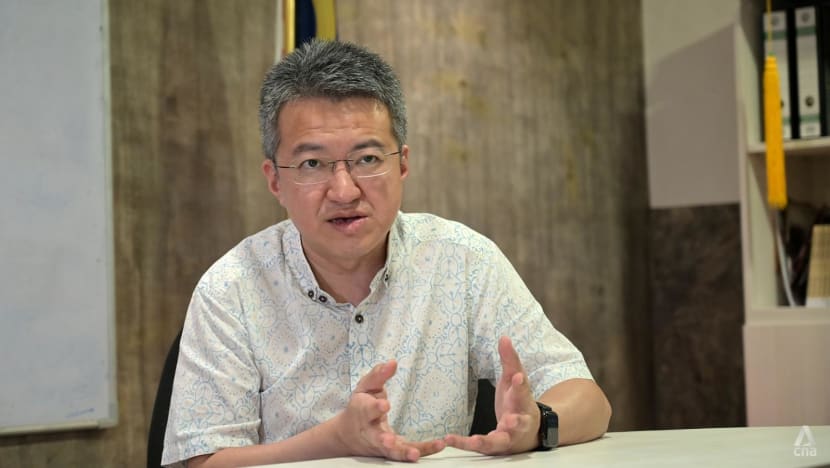
Mr Liew told CNA: “So if we can expand the options for commuting, creating a lot more options for smooth movement of people between the two sites … it will enhance the connectivity and it will make the SEZ a lot stronger,” he added.
WILL MOUNTING NATIONAL DEBT DERAIL HSR PLANS?
While there is optimism on how Johor’s rail network could benefit the country by bringing in business and investments, some are concerned that the proposed LRT and HSR projects are not financially viable for the federal government.
Transport analyst Rosli Khan, managing director of MDS Consultancy, told CNA that the HSR could cost the government RM120 billion in operating costs in the coming years as well as the estimated RM20 billion to construct the Johor LRT system.
Dr Rosli added that with the government recording a RM1.5 trillion national debt and other debt associated with the 1Malaysia Development Bhd scandal, it would not be fiscally prudent to engage in such huge expenditures.
“It appears that the cost for HSR is simply too high for the government to bear. At the same time, it appears that the passenger travel demand between KL and Singapore is not sufficiently high enough to justify private sector investment to build this HSR,” said Dr Rosli.
“The track construction cost, electrification and signalling together with other auxiliaries, are simply too high to turn it into a profitable venture by the private sector companies.
Funding the project from the commercial sector will be a challenge, as it will not give a good return on investment (ROI),” he added.
In January, Malaysia’s government announced that seven Malaysian and international groups - comprising 31 firms - have submitted their concept proposals for the development of the KL-SG HSR project.
ICoE-Rail’s Assoc Prof Nor Aziati said that the HSR is a project that is under the PPP (public-private partnership) model in which the construction may be funded by a private company and the operating costs are jointly shared between both the government and a private entity.
However, she stressed that private firms involved in such huge megaprojects like the HSR would expect positive ROI, and that there is no certainty that the HSR project for instance would yield net profits.
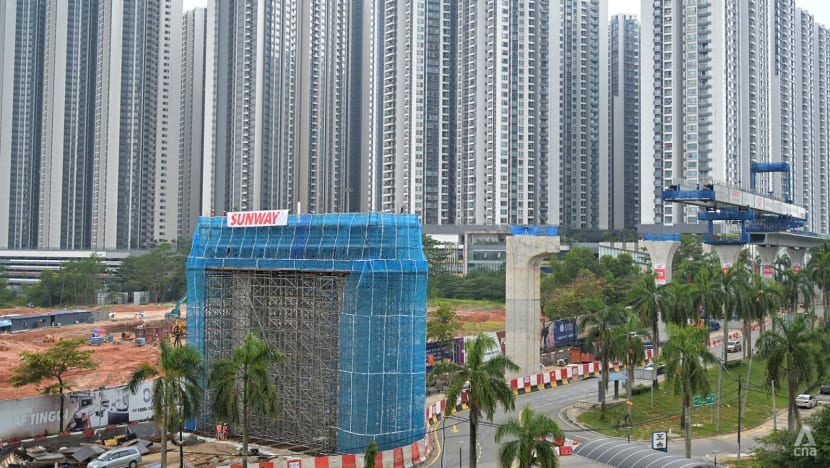
The Johor state government’s Mr Mohamad Fazli told CNA that one must consider the investment which will be brought in by megaprojects like the HSR, which he termed as “transit-oriented development”.
He explained that for instance, based on the previous proposal for the HSR alignment, the stopover stations included Iskandar Puteri, Melaka and Seremban, and that these stations would benefit from spillover effects of being along the route.
“These stations are adjoined to towns and with the HSR, the towns will be more developed, and the economy will benefit. This has to be considered in the calculations,” added Mr Mohamad Fazli.
As a compromise to replace the HSR, Dr Rosli recommended that the government consider repurposing the Gemas-JB electrified double track project which is due to be completed in 2025, and runs through central Johor from Johor Bahru until Padang Besar in Perlis, passing through Kuala Lumpur.
“The government has funded this double track project and it has to operate and recoup the capital investment first before committing itself to another exorbitant expenditure,” said Dr Rosli.
“Against this scenario, it makes it harder for HSR to attract sufficient numbers of passengers to make the services more financially viable,” he added.
SWAPPING LRT FOR ART?
Transport experts also suggested that to lower cost expenditure, the government should consider replacing the proposed LRT system in Johor with an Autonomous Rail Rapid Transit (ART) system proposal.
ICoE-Rail’s Assoc Prof Nor Aziati outlined that the ART is a trackless transport network, running on roads. The carriages use sensors to allow the vehicle to automatically follow a route defined by a virtual track.
Meanwhile the LRT system, which is used in Kuala Lumpur, is a larger capacity railway track which runs at around 60 km per hour.
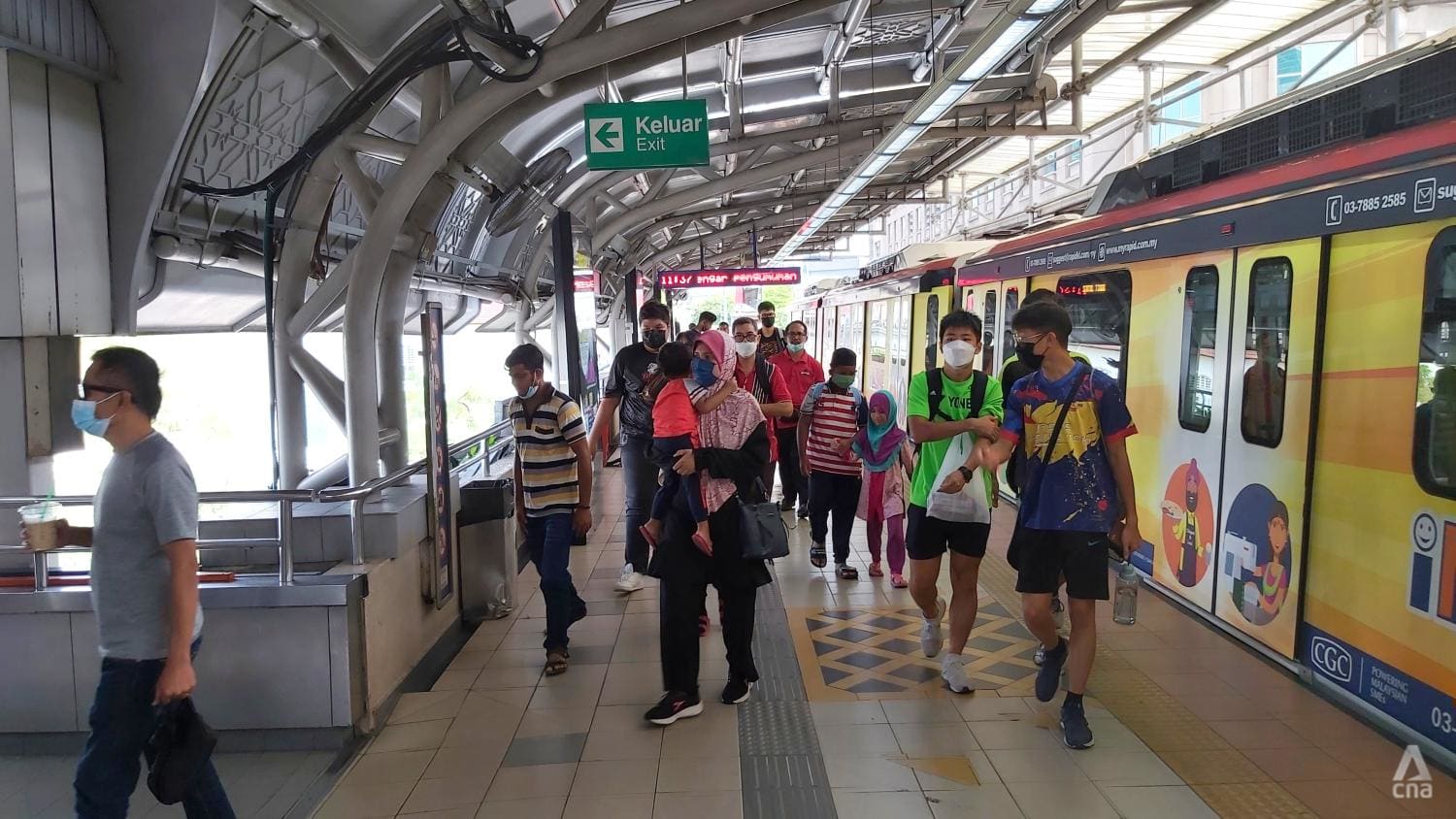
Dr Rosli pointed out that elevated LRT systems would cost around RM90 to RM100 million per km. He said that the ART system, which would cost around RM10 million per vehicle, would be "much cheaper and more immediately available" for Johor to implement.
“This is exorbitant when compared to autonomous road trams that are currently being tested in Kuching and Putrajaya. An ART system costs only a fraction of LRT or MRT, and it can be designed to provide more or less similar capacity,” said Dr Rosli.
“But somehow, those involved in the planning of public transport facilities in the country today are shying away from disclosing their reasonings for choosing such a system.
“Maybe they have other pertinent or hidden reasons that they don't wish to share with us or the public. Perhaps, these planners could be more transparent with their reasonings, systems assessment and evaluations. I think we, the public, need to know the details,” he added.
During the interview with CNA, Mr Mohamad Fazli said that the Johor state government was not ruling out pivoting to the ART system to save on costs and that it will decide soon if it will submit a new proposal to the federal government on whether the ART system would be more viable.
“We have to consider the execution of these projects for Johor, and of course at the foremost of our considerations is costs. We will decide whether to proceed with LRT or ART in the next few months,” he added.


















